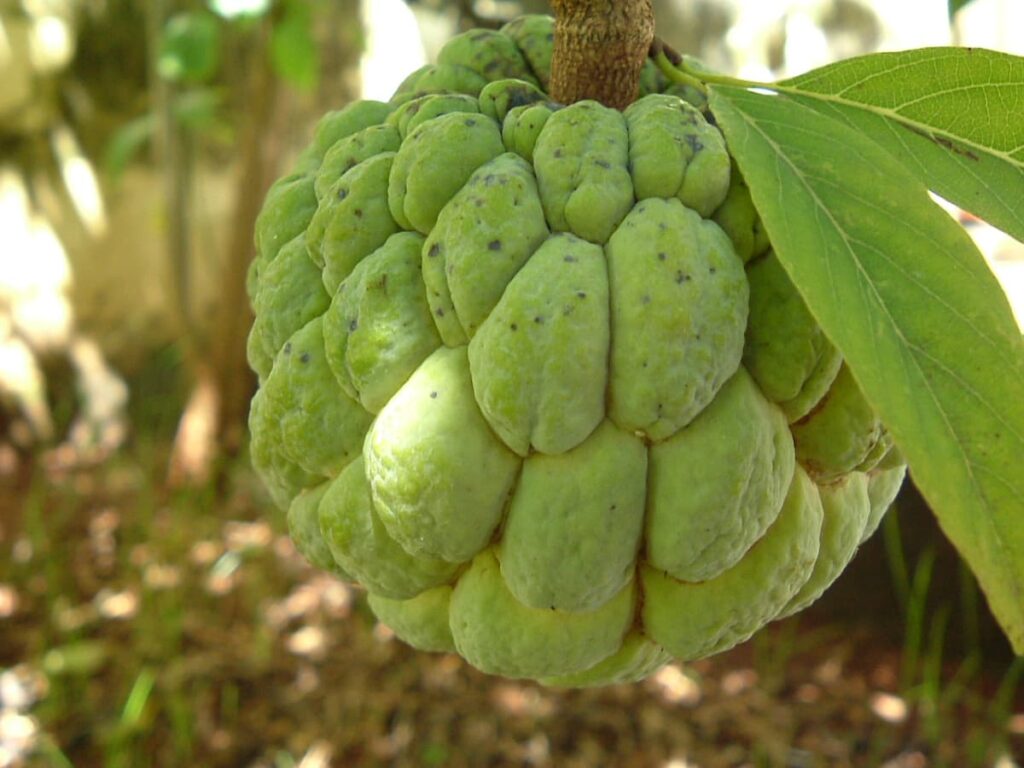Cherimoyas, or custard apples as they are also called, are a subtropical fruit. The Annonaceae is the family that which they belong. Annona Reticulata is the trees that produce custard apple. Custard apples are a favorite and common fruit in many homes.
The custard apple has a heart shape. It is a sweet, aromatic fruit. Custard apples are available in two different varieties, Pink Mammoth or African Pride. Both varieties are full of flavor and juicy.
Diabetes affects millions of people. Normal results are too much sugar in the blood, which can have severe consequences. The environment, external habits, and our immune system can all contribute to the condition. There are two types – Type 2 diabetes and type 1 diabetes. In the first, the pancreas produces little or no insulin, while in the second, the blood sugar is difficult to process.
Custard Apple Nutritional Facts
- Fat — 0.3 grams
- Sodium – 9 milligrams
- Potassium – 247 milligrams
- Total carbohydrate (24 grams)
- Dietary Fibers– 4.4 grams
- Protein – 2.1 grams
- Calories – 94 cal
Sugar content in custard apples: Custard Apples are primarily glucose and fructose. Custard apple is often sweet and contains about 28% sugar.
Custard Apple Glycemic Index
The glycemic index is usually a system where we assign certain values to the carbohydrate-containing food and how much consumption will increase the sugar level.
Custard apples have a glycemic load of 10.2 and a GI of 54, which is low. It also contains a moderate amount of glycemic load, which is 10.2.
We are now able to give the green light for custard apples in diabetes, but only if they are consumed moderately.
Can a Diabetic eat Custard Apples?
Custard apples have many anti-diabetic qualities. It is therefore safe to say that diabetics can eat custard apples. Custard apples, if taken daily in small amounts, can help fight diabetes. The fruit is sweet, but its glycemic index is low, so it will not have many effects.
The presence of antioxidants can also increase insulin production and reduce the absorption rate of blood glucose. Custard apple leaves and the fruit itself have anti-diabetic qualities, making them a good choice for diabetics.
Custard apple good for diabetes?
In a moderate quantity, a custard apple is beneficial for diabetics. Custard apples have a low glycemic index, and their glycemic loads are also low. This means diabetics can consume them. Custard apples contain dietary fibers that slow down sugar absorption. This makes them good for diabetics. Custard apples are recommended for diabetics as they lower blood sugar levels.
Custard Apple Benefits Diabetes
Custard apples are a favorite and frequently consumed fruit. Let’s look at their health benefits:
High in antioxidants
Custard apple is loaded with antioxidants that fight free radicals and reduce oxidative damage in the body. This helps to fight cancer and heart disease. Custard apples contain compounds such as Kaurenoic Acid and flavonoids. They also have carotenoids and vitamin C.
Brain Health:
Custard apples contain a lot of vitamin B complex, and are therefore a good source of vitamin B6. Vitamin B6 is involved in the production of neurotransmitters such as serotonin and dopamine, which are responsible for regulating our mood. The B complex controls the GABA (gamma aminobutyric acid), neuron chemical levels in our brains that are responsible for our different emotions.
Can Benefit Eye Health:
Custard apples are a good source of vitamin C, riboflavin, and other nutrients that help maintain our vision. Lutein, an antioxidant, is responsible for maintaining healthy vision.
Provides Better Cardiovascular Health:
Custard apples contain a balanced ratio between potassium and sodium, which helps regulate blood pressure. Magnesium is a mineral that helps to smooth out the heart muscle and protects against heart attacks.
How to Prevent Arthritis
Custard apples are rich in magnesium and help to keep the body’s water balance, eliminating acids from our joints. Custard apples also contain calcium, which is essential for bone health.
Custard apple leaves for diabetes
The leaves of custard apples are just as beneficial to the body as custard apples. The leaves are used to heal. Custard apple leaves contain antioxidants that can help to increase insulin production.
Custard apple leaves help to regulate blood sugar levels by assisting in the glucose absorption from muscles. Fibers are digested gradually, so there is not a sudden rise in sugar levels. Custard apple leaves combined with five grains of black pepper taken in the morning showed positive results for diabetes.
Custard Apples Disadvantages

Weight Gain:
Custard apples can cause weight gain if consumed in excess. Weight gain is also linked to cardiovascular disease and increased cholesterol.
Can Upset Our Digestive System:
Custard apples contain dietary fiber. However, excessive consumption can cause stomach problems such as diarrhea or constipation.
Overdose on Iron and Potassium:
Iron intake can lead to stomach ulcers and intestinal inflammation. Potassium relaxes blood vessels. However, a large amount of potassium can lower blood pressure. People with low blood pressure should consume less potassium.
Custard Apple Seeds
Custard apple seeds should not be consumed by pregnant women as they may upset their digestive system. They can have a toxic effect on the skin because they contain annacin. It can also affect the eyes.
Some medicines can interact with certain drugs:
If you have high blood pressure, custard apples and medicines can help lower your blood pressure to an extremely low level.
The Bottom Line
The subtropical custard apple has many benefits. The fruit is sweet and can be prepared in many different ways. It is rich in anti-diabetic compounds. It is very healthy, but because of its side effects, it should only be consumed in moderation by diabetics or those who are not. The custard apple leaves are also healthy.




